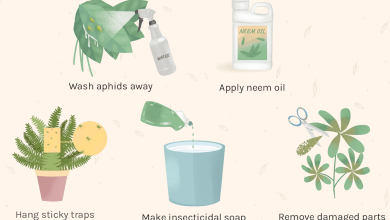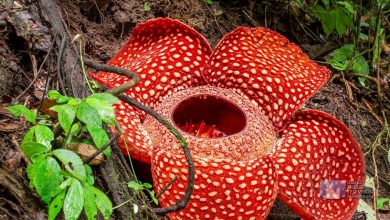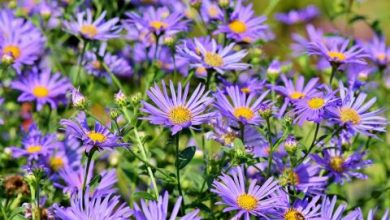Pericon (Tagetes lucida)

Today we are going to talk about a plant whose color is undoubtedly very striking. It is known as pericon. Its scientific name is Tagetes lucida and it is also known by the common name of yerbanís. They are plants that grow in nature and have a quite striking aroma. They can be had in the garden to combine with other plants and enjoy their different aroma. It will provide a special touch that every garden needs.
In this article we will help you learn to take care of the pericon in a correct way and you can enjoy it and the properties it has.
Main features
![]()
This herb has linear to oblong leaves and is usually about 8 centimeters long. The color is bright medium green and it is what brings the aroma to the plant. It is known by the name of yerbanís because its leaves have a taste very similar to anise. These leaves are edible and are often used to dress fish, chicken salads, soups, and other dishes.
Flowering takes place in late summer. The pericon develops a series of small, golden-yellow flower heads at the ends of the stem branches. Each flower head measures about 1.3 centimeters. They are usually grouped in 3 to 5 flowers with that golden yellow color that attracts so much.
The flowers are hermaphroditic in type, so they have both male and female organs. They are pollinated by insects. This helps to attract some wildlife to the garden to help with the reproduction and quality of the decoration of our green area.
It is a native plant of Mexico and Central America and is an essential ingredient in the preparation of Aztec cacao drink. This drink is well known and the special ingredient is pericón. The aroma of this plant is similar to that of woodruff and its flavor helps to dress many dishes. Many people even take it directly into infusions.
They are not very complicated to take care of, so we will not have to eat our heads to enjoy their properties and aroma.
Pericon requirements

We are going to analyze step by step what are the requirements so that the pericón can develop in an adequate way. It is a plant, in general, quite rustic. In fact, other species of the genus Tagetes are frequently used in public gardening. This is important, since for the decoration of public places, the maintenance of the plant and the associated costs is a main aspect to take into account.
The pericón we can have it both inside and outside the house, in planters or on the balcony. Most often they are used for the garden in combination with other plants and to provide the aroma that intoxicates the entire garden.
Indoor
![]()
We are going to see the care that the pericón needs if you want to have it indoors. The first thing is the location. If possible, it should be as close to a window so you can get as much natural light as possible. You will notice that it lacks light if when the end of summer arrives it does not emit any flowers. If it does emit a flower, it will not have the golden yellow that we are expecting.
The best thing is that the plant is as well illuminated as possible. If inside the house we do not have a window facing the sun so that it receives light in the best hours of the day, it is better to place them on terraces or balconies. What they do not need is direct sun for a long time, since if they have been developed indoors, they have weaker tissue and are capable of damaging the leaves if they are exposed to direct sun for a long time.
Another recommendation is that, if we have it as an indoor plant and we have been using it for more than a month, we will not have it indoors much longer. The best thing is to pass it abroad. In this way, we will be able to enjoy the plant for the healthy time that it has been indoors, but we will also now enjoy it outdoors without it becoming wilted and spoiled.
You need a special liquid fertilizer for flowering plants. This fertilizer must go into the irrigation water for better assimilation. The only maintenance is to remove the flowers to prevent the plant from running out and emitting more flowers. They don’t usually have pest or disease problems indoors.
Abroad
![]()
Now let’s see what the pericon needs outdoors. It must be planted in full sun. Unlike indoors, they can use a little shade, but most of the day should be in full sun. If you have it in the shade for a long time, you will notice that the plant has a much more developed growth, but the flowers are noticeably diminished. You will also notice a duller color of the flowers.
It requires a fresh and rich soil. We can enrich the garden soil and mix it with a planting substrate. Dosage will vary depending on the quality of the original soil. We will add substrate to the mixture until we see that it is spongy and of a color similar to peat. When the earth has this color, it means that it is rich in organic matter.
If the care and environmental conditions are necessary, the pericón can be in the garden perfectly between 3 and 5 months.
As for irrigation, it should be moderate, but without the soil getting to dry out completely. Do not wet the flowers when we are watering. The waterings must be done first thing in the morning or in the afternoon so that they dry slowly with the rise in temperatures at peak times of the day. We must not water the soil by watering or we will cause the roots to rot.
The payment will be made biweekly. We incorporate it with the irrigation water and we will use the lowest dose recommended by the manufacturer.
I hope that with these tips you can enjoy the pericón and its aroma in the garden.




